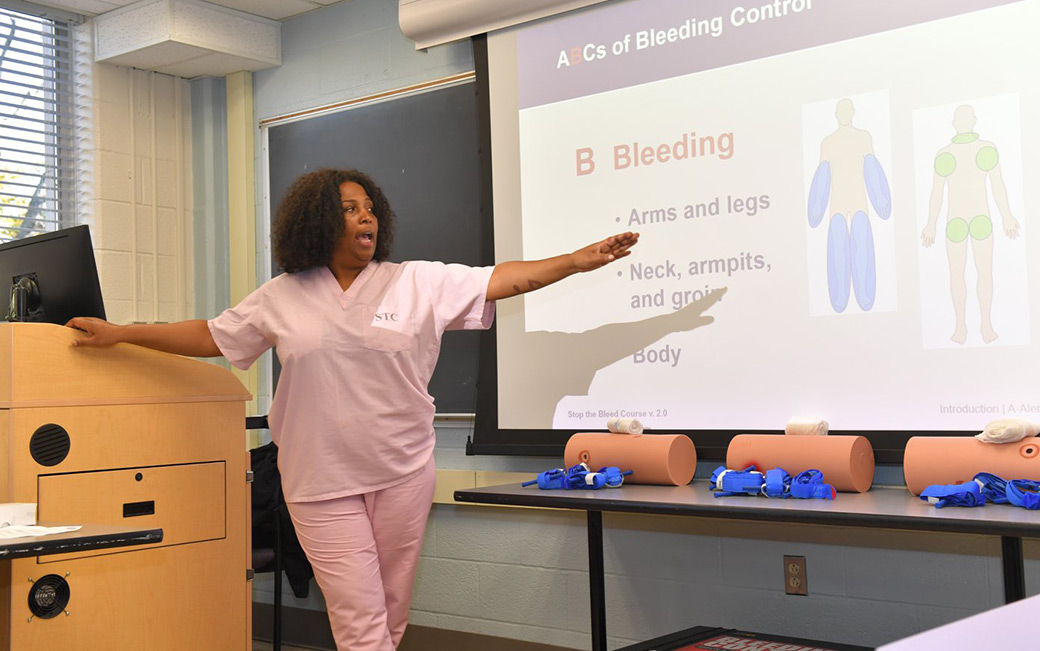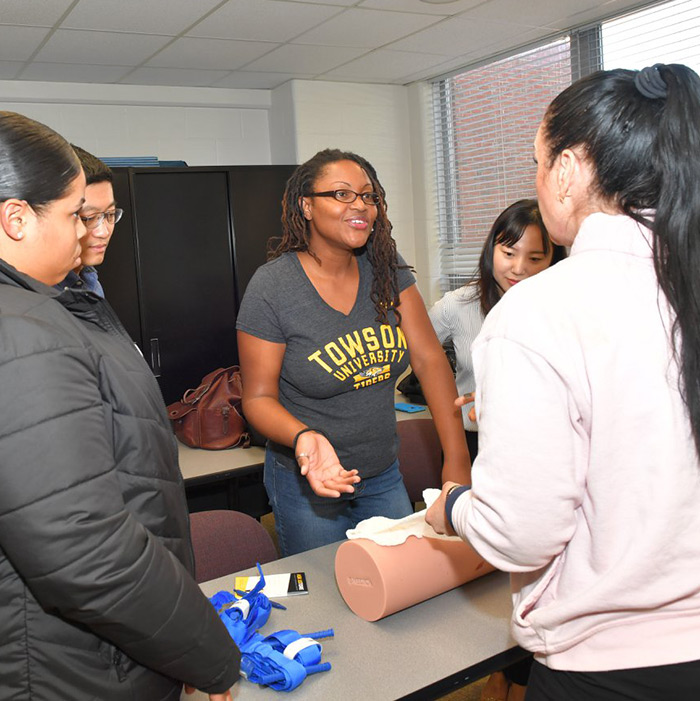College of Health Professions faculty learn how to ‘stop the bleed’
Faculty requested training from Shock Trauma to step up their emergency preparedness
By Megan Bradshaw on November 6, 2019

A study of the autopsies of the victims of the 2012 Sandy Hook Elementary School mass shooting showed that 35% died of profuse bleeding rather than directly from gunshots. That means nine of the 26 people who died that day could have lived if someone had known how to stop their bleeding.
Part of a federal initiative created during the Obama administration, the “Stop the Bleed” Maryland campaign has certified over 10,000 people in the last six years—a number that now includes 11 members of Towson University’s College of Health Professions (CHP) faculty.
On Friday, November 1, the faculty gathered in Linthicum Hall to listen to a presentation by Pam McNeal, an RRT-ECMO specialist at R Adams Cowley Shock Trauma Center in Baltimore.
“These free, lifesaving trainings give bystanders the opportunity to help save a life (or lives) in the event that someone is injured with life threatening bleeding,” said McNeal. “Proper tourniquet use and/or compressing a bleed may give an injured person a chance to survive until a first responder can arrive.”

The faculty members learned the basic steps to take during an emergency involving uncontrolled bleeding. Using the phrase “Me ABC,” McNeal taught the faculty to ascertain their own safety, alert 911, identify life-threatening blood loss and assess triage and then start packing and/or compressing the wound.
“Towson University faculty were quite impressive,” continued McNeal. “Our team found them to be very enthusiastic, engaged and quick to learn the skills. The TU faculty are planning more trainings this year and in 2020. It shows how invested Towson University is regarding this life saving initiative.”
Training participants practiced wound packing and compression on dummy limbs before learning to use a combat application (CAT) tourniquet.
“We believed it was imperative that we were prepared in case of a natural disaster or an active shooter event,” said Walter Dearborn, a lecturer in the health sciences department who organized the training. “Learning how to use a tourniquet was most beneficial because it significantly increases the chances of a victim's survival.”
This story is one of several related to President Kim Schatzel’s priorities for Towson University: World-Class Faculty Development Center.